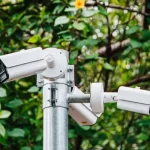As technology continues to advance, the number of connected devices in our daily lives continues to grow. From smart thermostats to wearable fitness trackers, the Internet of Things (IoT) has become an integral part of our modern world. However, with this increased connectivity comes the risk of vulnerabilities in these devices. It is essential for individuals and businesses to take steps to secure the IoT to protect their privacy and data.
The Growing Importance of IoT Security
The IoT has the potential to make our lives easier and more efficient, but it also presents new security challenges. Many IoT devices are designed with convenience in mind, often sacrificing security measures. This makes them an attractive target for cybercriminals looking to compromise personal data, disrupt critical infrastructure, or even launch large-scale attacks. As the number of connected devices continues to rise, the importance of securing the IoT cannot be understated.
Identifying Vulnerabilities in Connected Devices
One of the first steps in securing the IoT is identifying the vulnerabilities that exist in connected devices. These vulnerabilities can arise from a variety of factors, including poor design, outdated software, and lack of encryption. Many IoT devices also lack the ability to receive security updates, leaving them susceptible to exploitation over time. It is essential for both manufacturers and users to be aware of these vulnerabilities and take steps to address them.
Challenges in IoT Security
Securing the IoT presents a unique set of challenges. Unlike traditional computers and smartphones, many connected devices lack the processing power and memory needed to run robust security software. Additionally, the sheer number and variety of IoT devices present challenges in terms of standardizing security measures. This makes it difficult to ensure that all connected devices are adequately protected. Overcoming these challenges will require collaboration between manufacturers, users, and regulatory bodies.
Steps to Secure the IoT
Despite the challenges, there are several steps that can be taken to secure the IoT and address vulnerabilities in connected devices. One of the most important steps is to prioritize security during the design and development of IoT devices. This includes implementing encryption, secure software updates, and strong authentication measures. Manufacturers should also provide clear guidelines for users on how to secure their IoT devices, including setting strong passwords and keeping software up to date.
For users, it is important to be vigilant about the security of their connected devices. This includes regularly checking for software updates, using strong and unique passwords, and being mindful of the data that is being collected and transmitted by IoT devices. Additionally, businesses should consider implementing network segmentation to isolate IoT devices from critical systems, thereby reducing the potential impact of a security breach.
The Role of Regulation in IoT Security
Regulatory bodies also have a role to play in securing the IoT. In recent years, there has been a push for regulations that require manufacturers to meet certain security standards for their connected devices. This includes mandating the use of strong encryption, providing regular security updates, and ensuring that IoT devices are not easily susceptible to hacking. These regulations can help to set a baseline for IoT security and encourage manufacturers to prioritize security in their designs.
The Future of IoT Security
As the IoT continues to evolve, securing connected devices will remain a top priority. This will require ongoing collaboration and innovation from manufacturers, users, and regulatory bodies. The development of new security technologies, such as machine learning and artificial intelligence, will also play a crucial role in detecting and preventing potential vulnerabilities in IoT devices. By taking proactive measures to secure the IoT, we can ensure that the benefits of connected devices outweigh the risks.
Conclusion
Securing the Internet of Things is an ongoing challenge that requires the collective effort of manufacturers, users, and regulatory bodies. By addressing vulnerabilities in connected devices and prioritizing security measures, we can ensure that the IoT remains a valuable and secure part of our daily lives. As our reliance on connected devices continues to grow, it is essential that we take the necessary steps to protect our privacy and data in an increasingly interconnected world.














